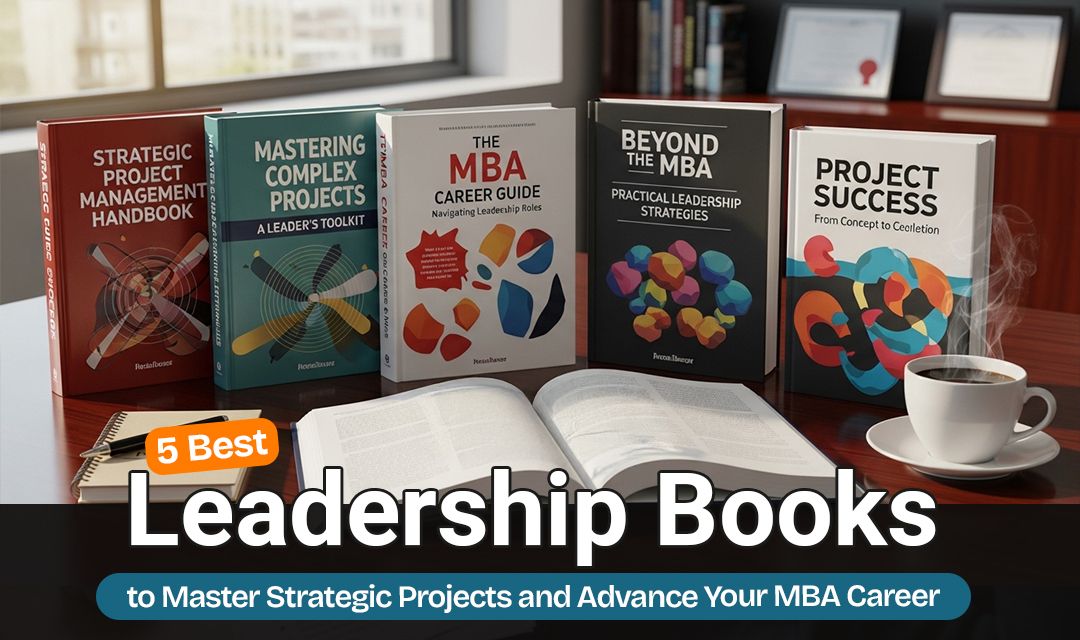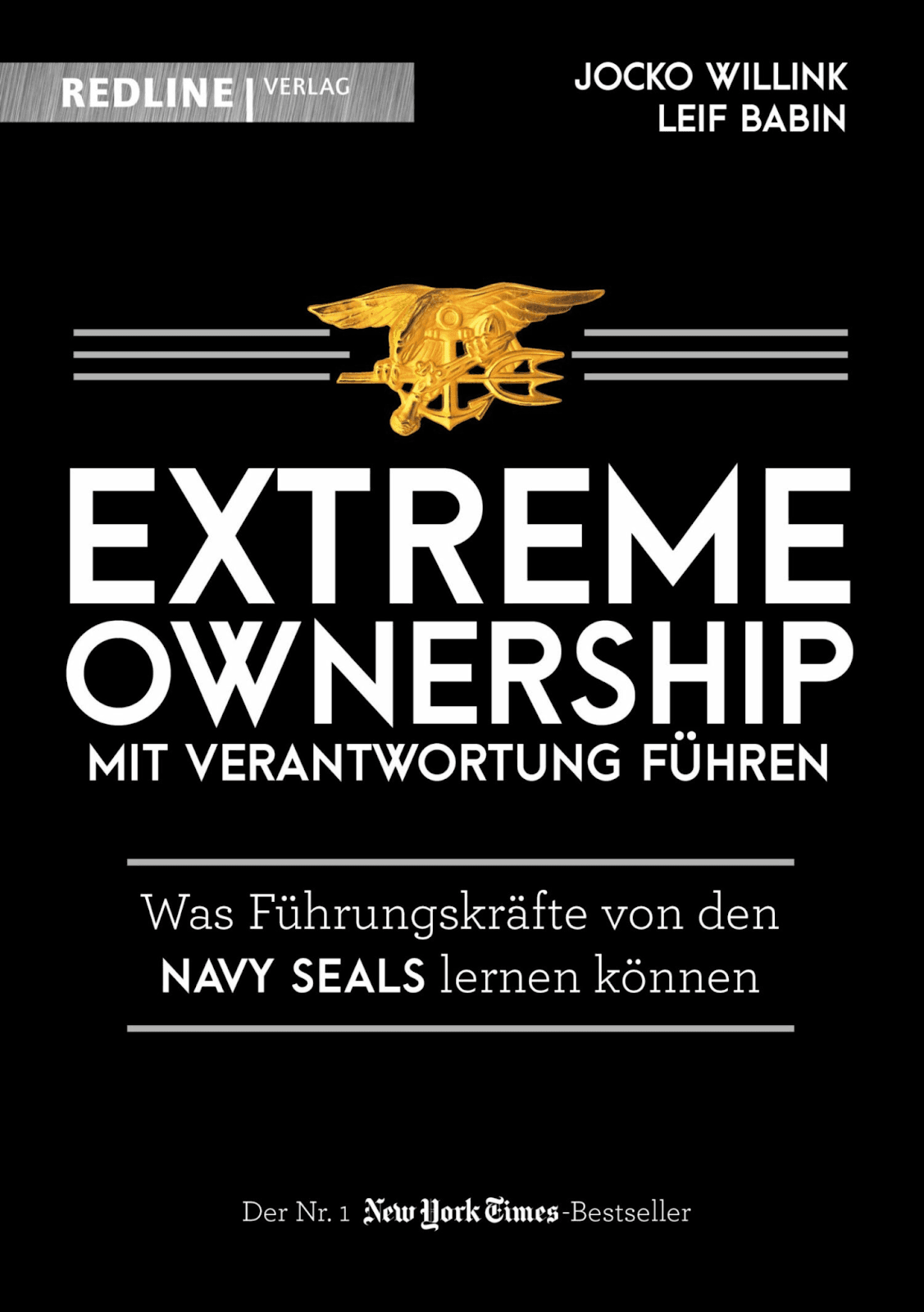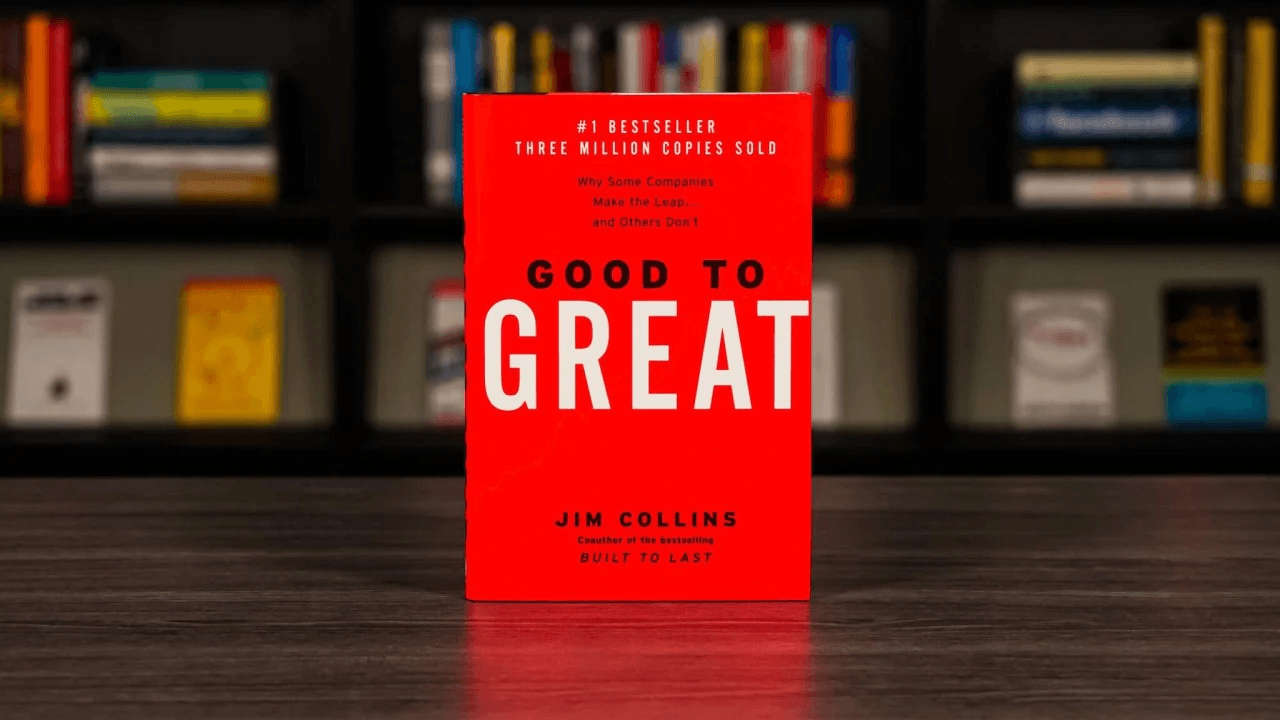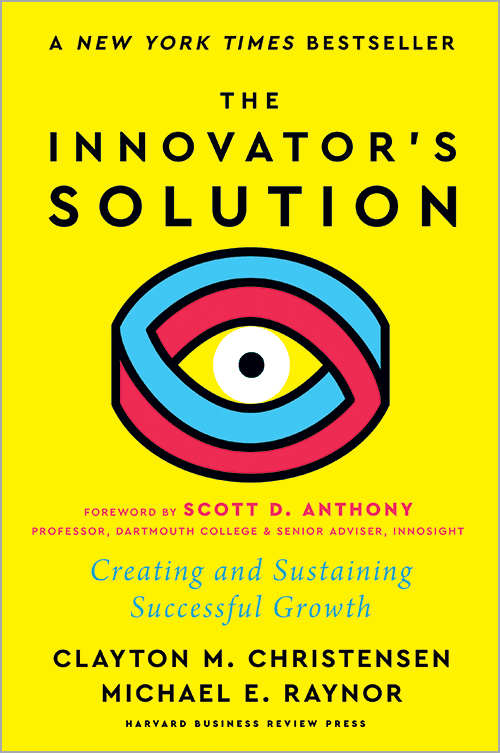5 Best Leadership Books to Master Strategic Projects and Advance Your MBA Career

This article highlights five powerful leadership books that can help MBA students sharpen their strategic project skills. Each book provides lessons to enhance decision-making and career advancement. Read till the end for details.
Do you ever think about how the right leadership books can transform an MBA student into a strategic leader ready for the corporate world? Business leadership is not built overnight; it comes through experience and a commitment to lifelong learning. An MBA programme provides the foundation for understanding management theories and corporate behaviour.
Good leadership books always offer wisdom drawn from real-world experiences and administration philosophies. These leadership books provide MBA students with tools to manage their projects and make their careers impactful. In this article, we highlight five of the best leadership books that serve as a complete playbook for mastering strategy and advancing your postgraduate career.
Core Messages Highlighted:
- Leadership comes through continuous learning and reflection rather than a powerful position.
- The 7 Habits of Highly Effective People is a great leadership book that teaches discipline and value-driven actions for personal and professional growth.
- Extreme Ownership is the best leadership book that helps to build accountability and responsibility as the foundation of effective teamwork and project success.
- Thinking, Fast and Slow helps leaders to understand human behaviour and make thoughtful decisions.
- Good to Great introduces the Level 5 Leadership and the concept of Hedgehog for achieving sustainable excellence.
- The Innovator’s Dilemma trains the leader of the future to adapt to change and encourage disruptive innovation.
A List of 5 Best Leadership Books to Master Strategic Projects and Advance MBA Career
Every great leader begins as a learner who seeks guidance from powerful ideas. These five leadership books offer MBA students the mindset and skills needed to lead with clarity and purpose.
1: The 7 Habits of Highly Effective People by Stephen R. Covey
Stephen Covey’s The 7 Habits of Highly Effective People is a classic leadership book that helps readers grow in life, personally and professionally. This book encourages readers to act in line with their true values and goals. In this book, Covey focuses on building character and discipline while teaching how to form meaningful relationships.

Source: Wikipedia
Application to Research Projects
The MBA students often face pressure while managing their research projects. Covey’s book Habit 3, Put First Things First, teaches how to stay focused on what truly matters. Harvard Business Review reported that the students who use the framework of time management complete their projects more efficiently.
Stephen R. Covey's books help MBA students to distinguish between the important and urgent tasks. However, even with such structured instruction, some students still face challenges in applying these principles in their academic writing due to tight deadlines and heavy workloads. In such a situation, using a reputable essay writing service in the UK can provide professional assistance and help maintain quality and focus.
When you are writing a project, Habit 2, Begin with the End in Mind, helps you set a clear direction in which every part of the research supports one main purpose. These habits transform a complex process into an organised and purposeful journey.
Career and Interview Strategies
Covey's book, Habit 5, emphasises the importance of empathy in communication. Employers always value this quality, as it helps to build strong teams and resolve conflicts. By adopting these habits, MBA graduates develop their confidence and leadership skills, creating a lasting professional impact.
2: Extreme Ownership by Jocko Willink and Leif Babin
Extreme Ownership is also considered the best leadership book. Extreme Ownership by Jocko Willink and Leif Babin teaches you that true leadership begins with taking full responsibility. The authors take lessons from their Navy SEAL experience to demonstrate how accountability builds trust and their success. Always, a great leader must own every outcome and avoid blaming others.

Source: Lehmanns Media
This approach also inspires MBA students to accept challenges with discipline and clarity. It helps to shift their focus from fault-finding to problem-solving. Leadership subsequently becomes a matter of choosing a clear goal and helping others through consistent action and real-world examples.
Application to Research Projects
MBA research often consists of teamwork and detailed planning. Applying Extreme Ownership helps the students to take responsibility for every outcome of their research. When problems emerge, they focus on the solutions to problems instead of excuses.
ResearchGate indicated that the leaders who take responsibility improve their team's effectiveness and motivation. By owning the project timeline and outcomes, students strengthen their performance and teamwork. This approach and mindset turn your challenges into learning experiences and build a stronger sense of leadership.
Career and Interview Strategies
In job interviews, employers value candidates who remain calm during their setbacks. Explaining how the principles of Extreme Ownership were applied in academic projects can leave a strong impression. It may express the ability to lead with responsibility and adapt quickly when facing obstacles.
This may interest you: 20 Outstanding Leadership and Business Books You Should Read This Year, Selected by Adam Grant
3: Thinking, Fast and Slow by Daniel Kahneman
Thinking, Fast and Slow is also a best leadership book. Daniel Kahneman’s Thinking, Fast and Slow explains how people make their decisions using the two-mental-systems approach.
- System 1 is quick and emotional
- System 2 is slow and thoughtful.
The leadership book Thinking, Fast and Slow expresses how biases such as overconfidence and anchoring can mislead judgment.
For the MBA students, it shows how managers and customers think in real situations. It helps to learn the value of pausing before deciding and balancing emotion with brief logic. Kahneman’s ideas also help future leaders make their choices based on reason and awareness rather than emotions.

Source: Blinkist
Application to Research Projects
MBA research often involves studying human behaviour and decision-making patterns. Applying Kahneman’s theory helps the students to recognise their own biases while analysing data. The Springer study found that people who reflect before deciding make fewer cognitive errors.
This research supports Kahneman’s idea of using System 2, which is thinking for accuracy. The students of MBA can test how bias shapes business decisions and customer choices. Awareness of this mental shortcut system helps the students to create more objective and accurate research outcomes. Leadership books also help in writing a literature review by providing theoretical foundations that strengthen academic analysis.
Career and Interview Strategies
In interviews and strategic roles, decision-making under pressure is common. Using the lessons from Thinking, Fast and Slow helps MBA students stay calm and logical when making decisions.
Employers respect candidates who analyse before reacting. With the help of Kahneman’s insights, students show the maturity and the ability to lead with balanced judgment and self-control.
Morgan M, a research analyst at The Academic Papers UK, states,
The MBA students who employ insights from the leading leadership books in their strategic projects consistently outperform their peers. Applying such principles not only strengthens your analytical skills but also enhances your decision-making capabilities, team collaboration, and career readiness. This type of guidance transforms the theoretical knowledge into actionable leadership capabilities.
4: Good to Great by Jim Collins
Good to Great is considered one of the top leadership books. Jim Collins’ Good to Great explores how some companies rise from average to exceptional success. The author of Good to Great introduces Level 5 Leadership, a combination of humility and strong determination. Such leaders focus on long-term success rather than personal gain.
They help the teams through discipline and quiet strength. Another key idea in this book is the hedgehog concept, which teaches that success lies in finding what you love and what drives results

Source: Gregory
Application to Research Projects
MBA students can use the Hedgehog Concept while preparing their strategic research or analysis of a company. It helps them determine how purpose and performance connect. The Academy of Management found that the leaders who align passion with capability achieve higher organisational performance. For students who are unable to express their ideas clearly, top-rated essay writing services can develop strong analytical and strategic papers that meet academic standards.
Career and Interview Strategies
During the interviews and assessments of leadership, referencing Superior to Great demonstrates depth and self-awareness. When students discuss Level 5 Leadership, they should highlight modesty and dedication as leadership strengths.
This approach reflects a fully focused mindset on collective success. Employers value such qualities because they create stable and high-performing teams.
5: The Innovator’s Dilemma by Clayton M. Christensen
The Innovator's Dilemma is a fantastic book for leadership. The Innovator’s Dilemma is a short story that explains why successful companies usually fail when new technology emerges. The innovator's dilemma introduces the language of disruptive innovation, which is used by small companies to break into the market of large, established firms.
These smaller firms operate at a faster pace and are riskier, whereas the market giants focus on serving existing clients. Innovations change industries over time, and new leaders who used to be leaders of the past struggle to adjust. Christensen states that success tends to make one blind to future opportunities.

Source: Harvard Business Review
Application to Research Projects
MBA students can apply Christensen’s framework to their research focused on technology and business transformation. A ResearchGate study found that the companies that track the disruptive trends early stay competitive longer. This demonstrates the importance of recognising early signs of change.
Students writing research projects on industries such as banking or energy can use these ideas to show how startups can disrupt big firms. The Christensen framework also helps to design the strategies for established companies to stay relevant through innovation.
Career and Interview Strategies
At the time of interviews or consulting, The Innovator’s Dilemma gives students a clear way to discuss managing disruption.
They can discuss how companies must sometimes restructure to survive. This attitude demonstrates awareness of innovation and adaptability, key qualities in modern leadership.
Conclusion
Leadership is not built solely on theory. It develops through practice and continuous learning. The five leadership books in The MBA’s Leadership Playbook provide personal and professional growth. Each book teaches you a unique principle that helps the students lead with a purpose and clarity.
These lessons build confident, considerate leaders who act responsibly, which is only one aspect of becoming a leader. MBA graduates who use such lessons can focus on project management and develop good career decisions.
The first stage to becoming a leader is the readiness to learn and become better every day. By adopting these principles, future leaders will be able to transform knowledge into action and problems into opportunities for achievement.
Read more: Leadership Nuggets II
Frequently Asked Questions about Leadership Books
What Books Explore Real-Life Stories of Great Leaders?
Books such as Leaders Eat Last by Simon Sinek and Team of Rivals by Doris Kearns Goodwin offer inspiring real-life examples of outstanding leaders. These leadership books highlight the enduring power of influence through empathy and collaboration.
Leadership books show how executives confront challenges and guide others through transformations. Practical examples communicate resilience and choices to the readers. These books will enlighten upcoming leaders to the fact that successful leadership starts with character and service, not power and authority.
Which Leadership Books Focus on Women in Leadership?
Books like Sheryl Sandberg's Lean in and Brené Brown's Dare to Lead focus on women in leadership. They promote trustworthiness and sincerity in the workplace. The books also discuss the issues women face in their quest to gain influence within organisations and offer ways to address them.
They also encourage women to be compassionate and to lead freely. These books encourage future female leaders to be ambitious and believe in themselves using personal narratives.
What Books Cover Building Leadership Skills For Students?
Books like The 7 Habits of Highly Effective People by Stephen Covey or Mindset by Carol Dweck can help students become leaders at a very young age. These leadership books help one build emotional intelligence and learn to set goals, which leads to discipline.
The contents of such books can help students to be self-sufficient, and Michael can be given the opportunity to work in groups and get projects in a manner that will encourage them. In these lessons, students learn how to communicate effectively and stay calm in the face of adversity. The books will also capture the attention of young learners with the strength to make them responsible and motivated leaders in their studies and careers.
Leadership
Tags: Abundance Mindset, Alignment & Clarity, Be A Leader, Brain Bulletin, Building Functional Competencies, Competence, Character, Consultant Corner, Emerging Leadership
Sophie Williams is a London-based business writer and leadership strategist with over a decade of experience covering management education, executive coaching, and corporate innovation. A graduate of the University of Cambridge with an MBA from Warwick Business School, she has advised professionals and students on leadership development and strategic project management. Her work has appeared in Business Insider UK, The Financial Times’ MBA Blog, and Harvard Business Review Ascend. When she’s not writing about business growth and leadership trends, Sophie mentors young managers pursuing global MBA programs.






